The Phlegraean Fields (also known in Italian as ‘Campi Flegrei’) is an active volcanic area located in the vicinity of Naples, Italy. Unlike the nearby Mount Vesuvius, Campi Flegrei is not characterised by a single volcano. It is more of a volcanic system, with several centres situated within a depressed area called a caldera (essentially a deep sinkhole or cauldron).
Campi Flegrei is surrounded by suburbs and densely populated areas close to the city of Pozzuoli. For the past 40 years, it's been relatively quiet and peaceful, but in September 2023 – that started to change.
Earthquakes started to be felt at Campi Flegrei in September 2023. Since then, over 1,100 have been recorded – some as powerful as 4.2 on the Richter scale. This has led to a change in the height of the surface of the land. It's a process known as 'bradyseism'. The area has been affected by this phenomenon before, most recently between 1968 and 1972, then again from 1982 to 1984.
Bradyseism can cause a raising or lowering of the land surface as magma chambers – buried between three and four kilometres deep – fill or empty, in a cycle of uplift and subsidence. It is this process that causes the earthquakes that residents here have been feeling.
But people living here are not concerned, regarding it as the ‘breathing of the volcano’ that sleeps beneath them. Even so, volcanologists have been studying the caldera to predict what might happen in the future to avert any potential disasters.
The Pisciarelli Fumarole
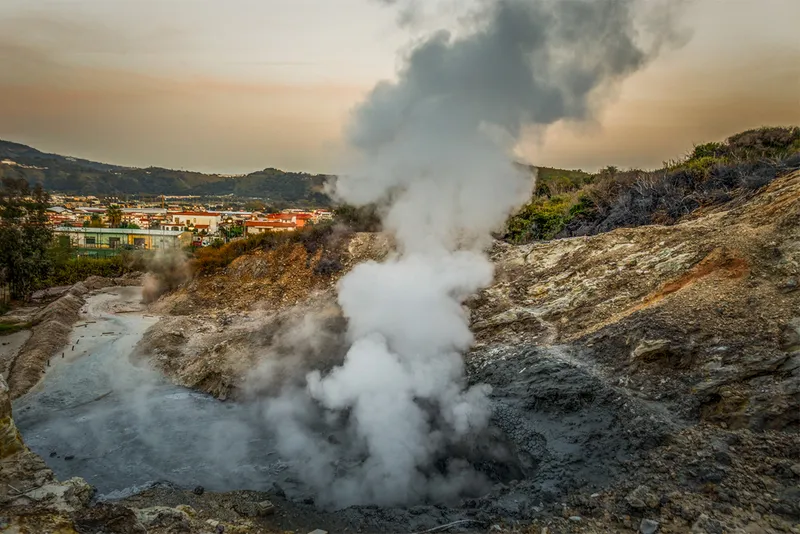
Fumaroles, such as the Pisciarelli Fumarole, are vents in the Earth's surface that emit steam and hot volcanic gases like sulfur dioxide and carbon dioxide. They can occur as holes, cracks, or fissures near active volcanoes, or in areas where magma has risen into the Earth's crust without erupting.
The Temple of Serapis
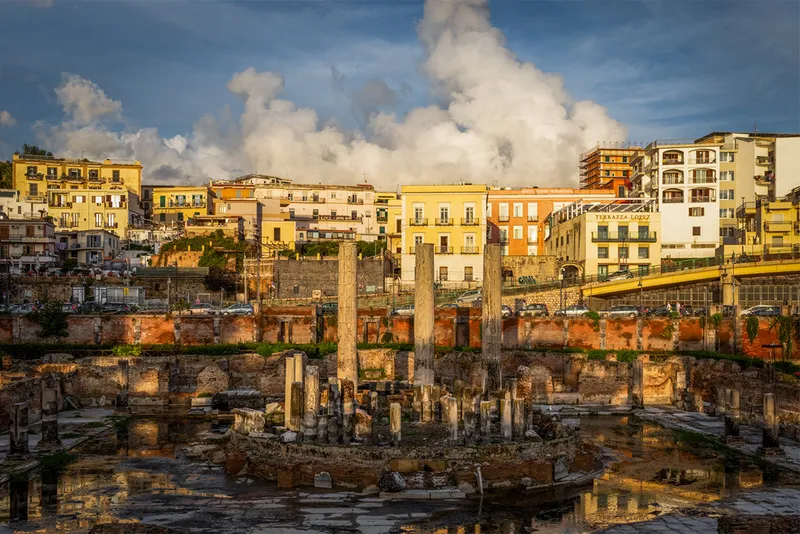
The Temple of Serapis in Pozzuoli (which wasn't a temple but a market building) is considered the iconic monument of the Campi Flegrei area. It's become a symbol of volcanic bradyseism in the region. Due to the rising or lowering of the ground underneath it's sometimes completely dry, and at other times semi-submerged in seawater.
The study of bradyseism over the past few centuries has been possible thanks to observations, such as those made on the ruins of this Roman-era building. For example, by studying holes made in the ancient columns by marine molluscs over centuries, scientists can study changing sea levels at this site.
Evidence of change
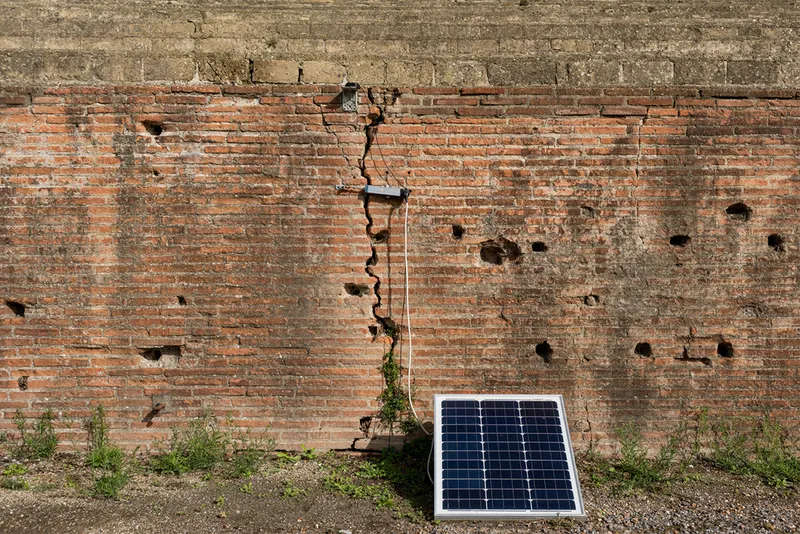
The entire Campi Felgrei area has been subject to continuous monitoring for years by organisations such as the National Institute of Geophysics and Volcanology (IGNV). Through various types of seismic analysis, they can provide projections of future activity and possible dangers to nearby residents.
Thermal monitoring
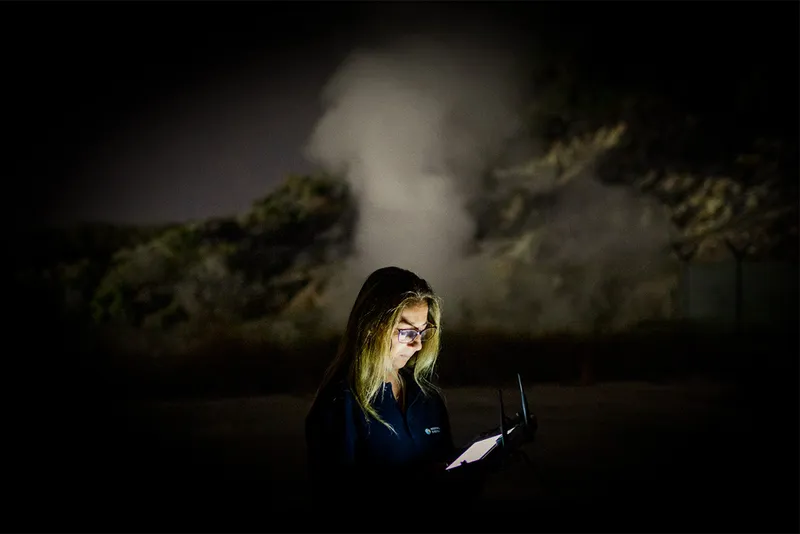
To get a better understanding of volcanic activity in the Campi Flegrei region, volcanologists from the National Institute of Geophysics and Volcanology use drones. They're equipped with thermal monitoring devices to study surface temperatures around the fumaroles.
These operations are conducted exclusively at night. Doing so prevents solar radiation from altering measurements of the surface temperature of the Earth's crust.
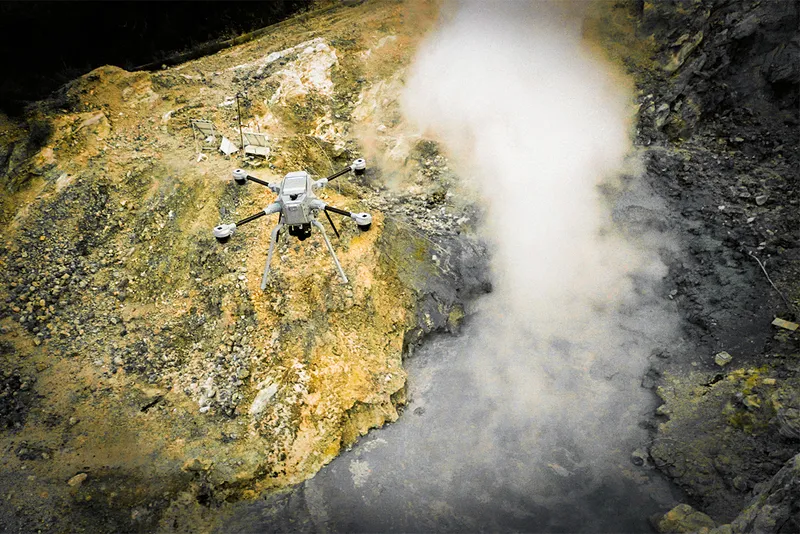
The risk to residents nearby from deadly pyroclastic flows is potentially quite high, making monitoring the situation vitally important. During the last bradyseism crisis here in 1983, over 30,000 people needed to be evacuated from the Campi Flegrei region.
undefinedThe volcano monitoring room
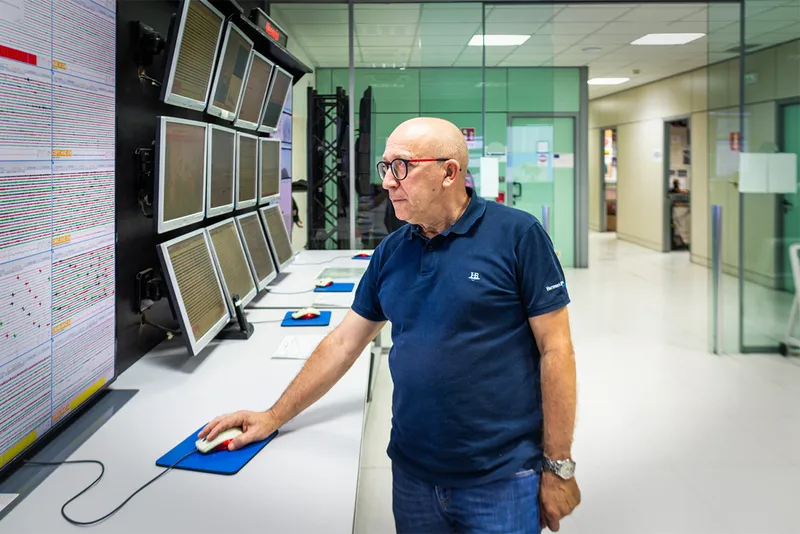
The Vesuvian Observatory is the oldest volcanic observatory in the world and was founded in 1841 to observe volcanic activity in the Naples area. This includes the Campi Felgrei area, as well as the volcanoes of Ischia, Stromboli and Mount Vesuvius.
Measuring the heat
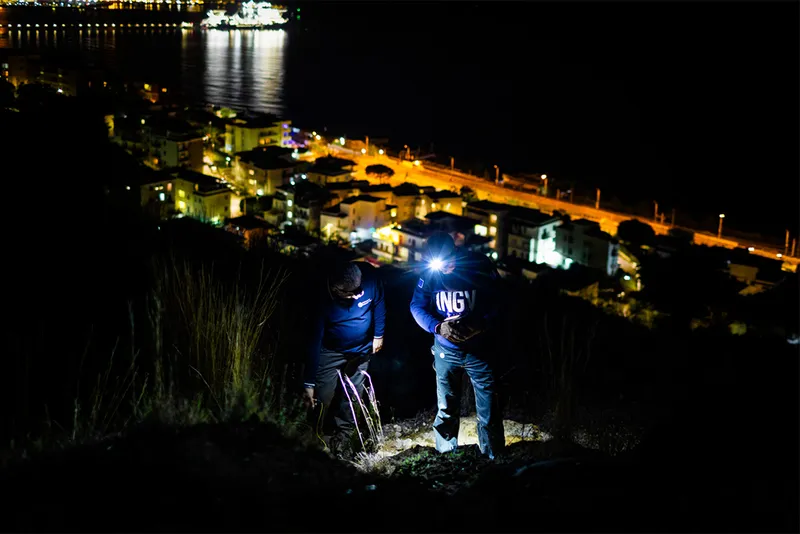
Monta Nuovo, or 'New Mountain' is an active cinder cone volcano. It's located between the bay of Naples and the centre of the city of Pozzuoli. It was formed in 1538 and is one of the first volcanic eruptions to be witnessed and recorded by many people. During its formation, the volcano destroyed the ancient Tripergole village, including thermal baths and grand Roman villas.
Monta Nuovo
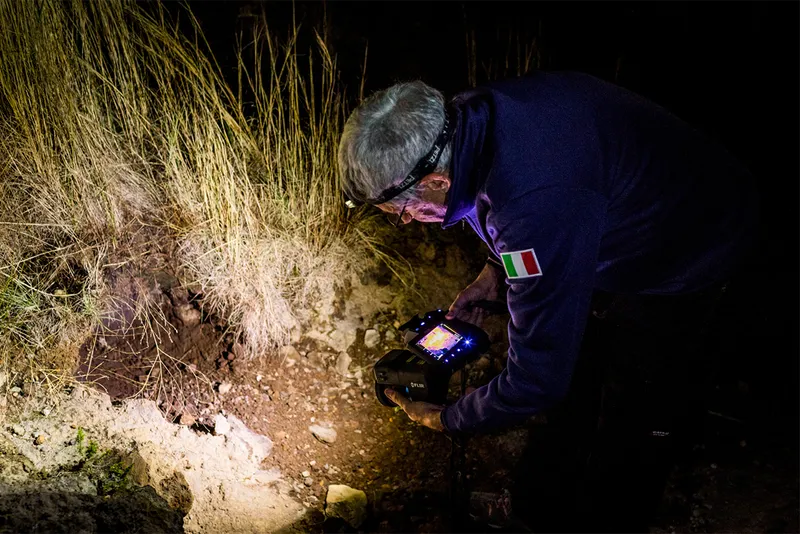
Scientists believe that any future eruption from this region will result in damaging and unpredictable pyroclastic flows, putting the lives of up to 500,000 residents in the area at risk.
The Solfatara Crater

The Solfatara Crater is one of the forty volcanic sites that make up the Campi Flegrei volcanic system. Most of these sites are located underwater in the Bay of Naples. Solfatara is located about three kilometres from the centre of the city of Pozzuoli. It used to be a popular tourist destination thanks to steam and sulphur emitted from the crater and has been used medicinally since Roman times. However, since 2019, it's been closed off from visitors since 2019 due to safety concerns.
Read more: